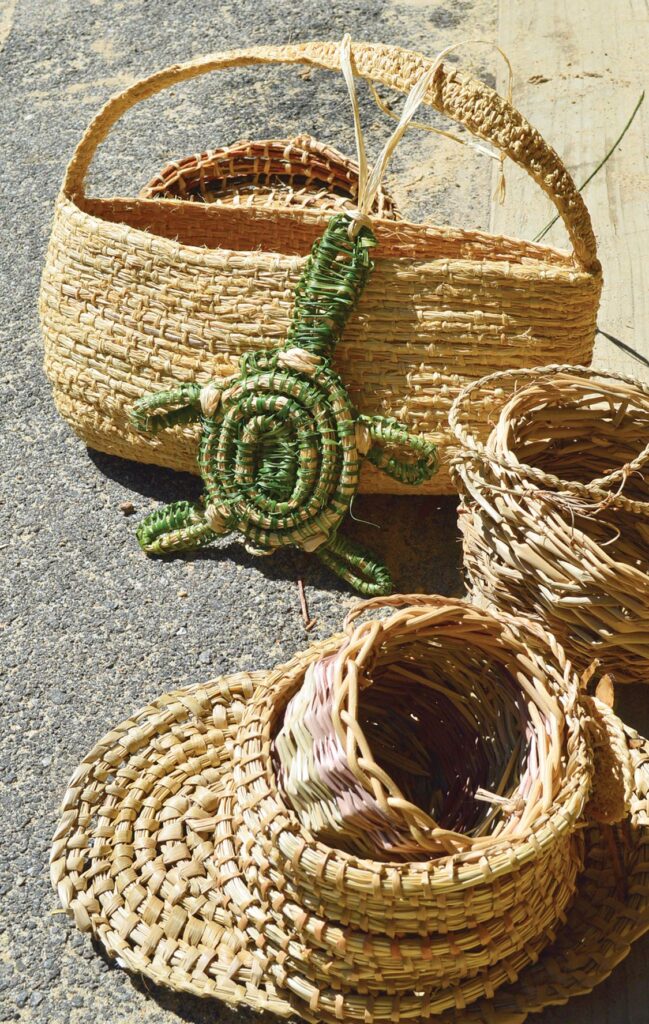I recently attended Canberra’s very first Native Plant Use Forum, which was put together by ACT Natural Resource Management (ACT NRM) and hosted by Environment, Planning and Sustainable Development Directorate. ACT NRM has a focus on biodiversity, sustainable agriculture and Aboriginal NRM.
The forum was held over two days and included showcase speakers, panel discussions and a field trip at Tidbinbilla Nature Reserve. It opened my eyes to a whole new world and appreciation of our landscape, its history and its natural resources.
So I promptly took myself on a native bush food plant shopping extravaganza with a view to enjoying and sharing some of these invaluable plants and their uses with readers.
The following are some of the interesting facts learnt at the forum:

Weaving with Kalkadoon/Pitta Pitta woman, Ronnie Jordan, of Culture on the Move
- Traditionally, weaving can be carried out by both men and women, but it is dependent on what tribe they are from and their beliefs.
- Weaving is a relaxing pastime, which also brings out emotions. It can be done subconsciously, allowing people to multitask.
- Dianella and Lomandra (preferably fine leaf forms), Typha (Cumbungi or Bullrush) and Juncus are grasses commonly used for weaving. Collect only a few leaves from each plant, for their conservation. Foliage cannot be collected from protected parks and nature reserves.
- Once picked, leaves are dried for several weeks before being soaked and used when damp.
Flints, artefacts and health with Wiradjuri man, Shane Herrington, Aboriginal Discovery Ranger, NSW Parks and Wildlife
- Boomerangs come in different shapes for different uses.
- Tools are often multiuse, e.g. digging sticks have a pointy end for breaking up hard ground and a shovelled end for digging.
- The Kurrajong tree (Brachychiton) has many traditional uses including using seeds as a coffee substitute or ground to make flour, water can be harvested from the roots, and fibre is made and harvested from under the bark for weaving dilly bags and nets.
For more information about NRM ACT, visit environment.act.gov.au/act-nrm
For more:








